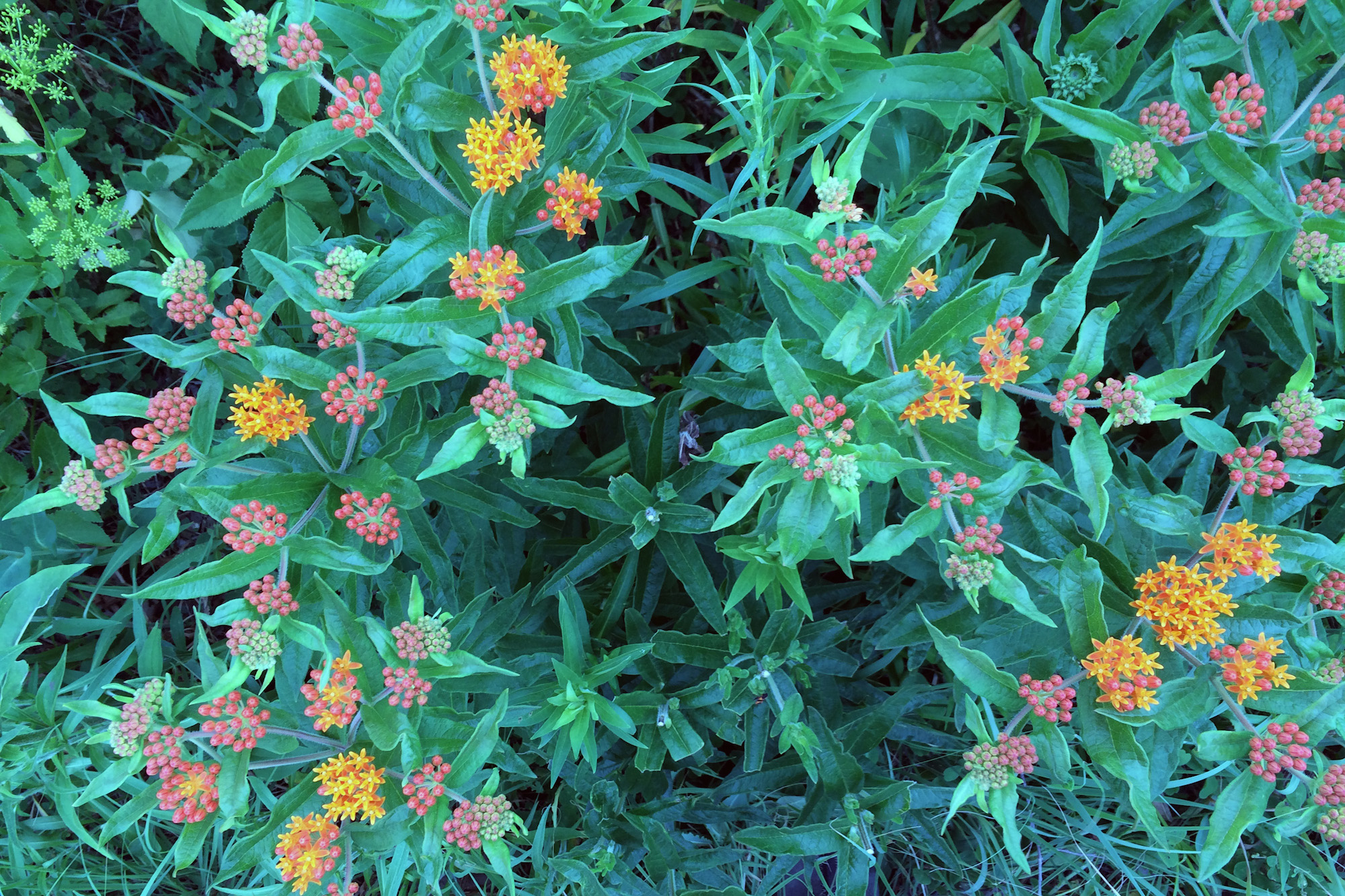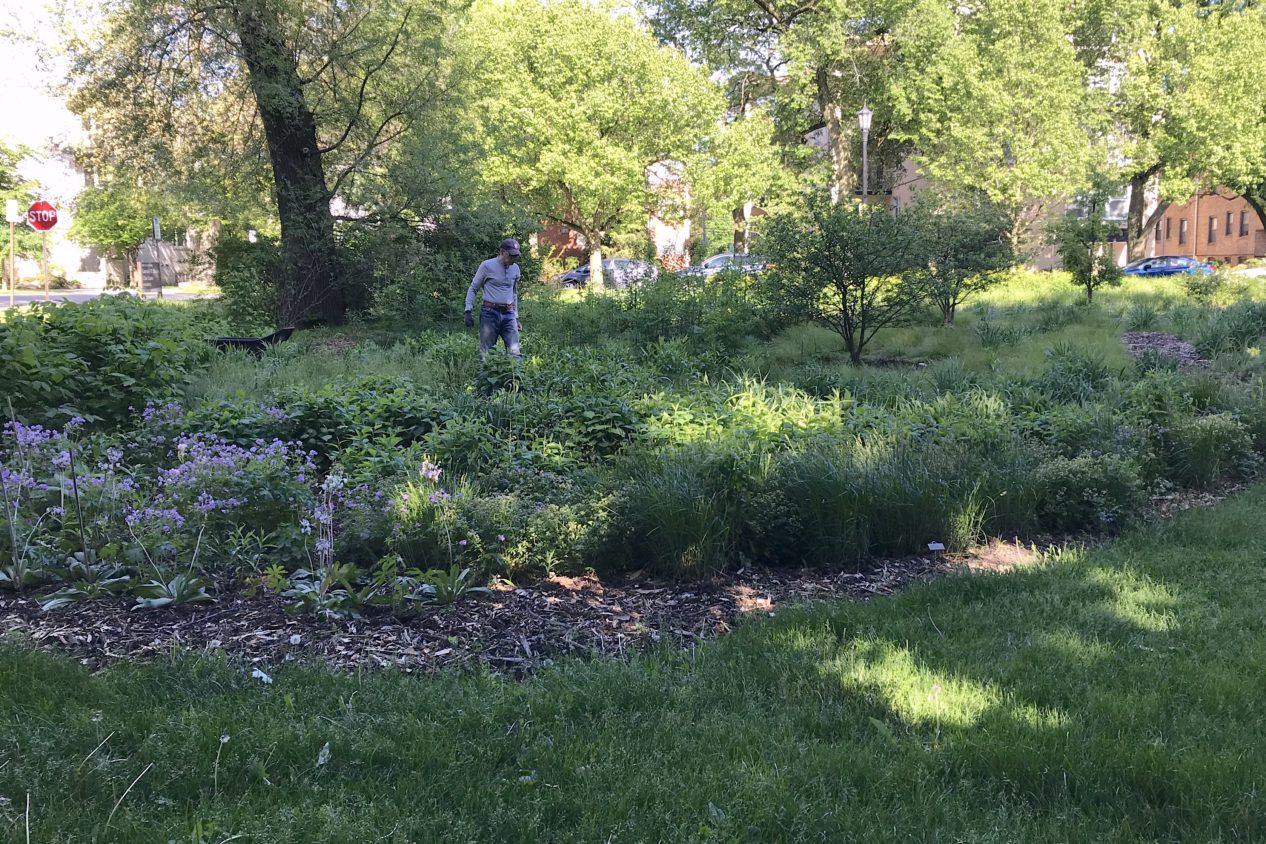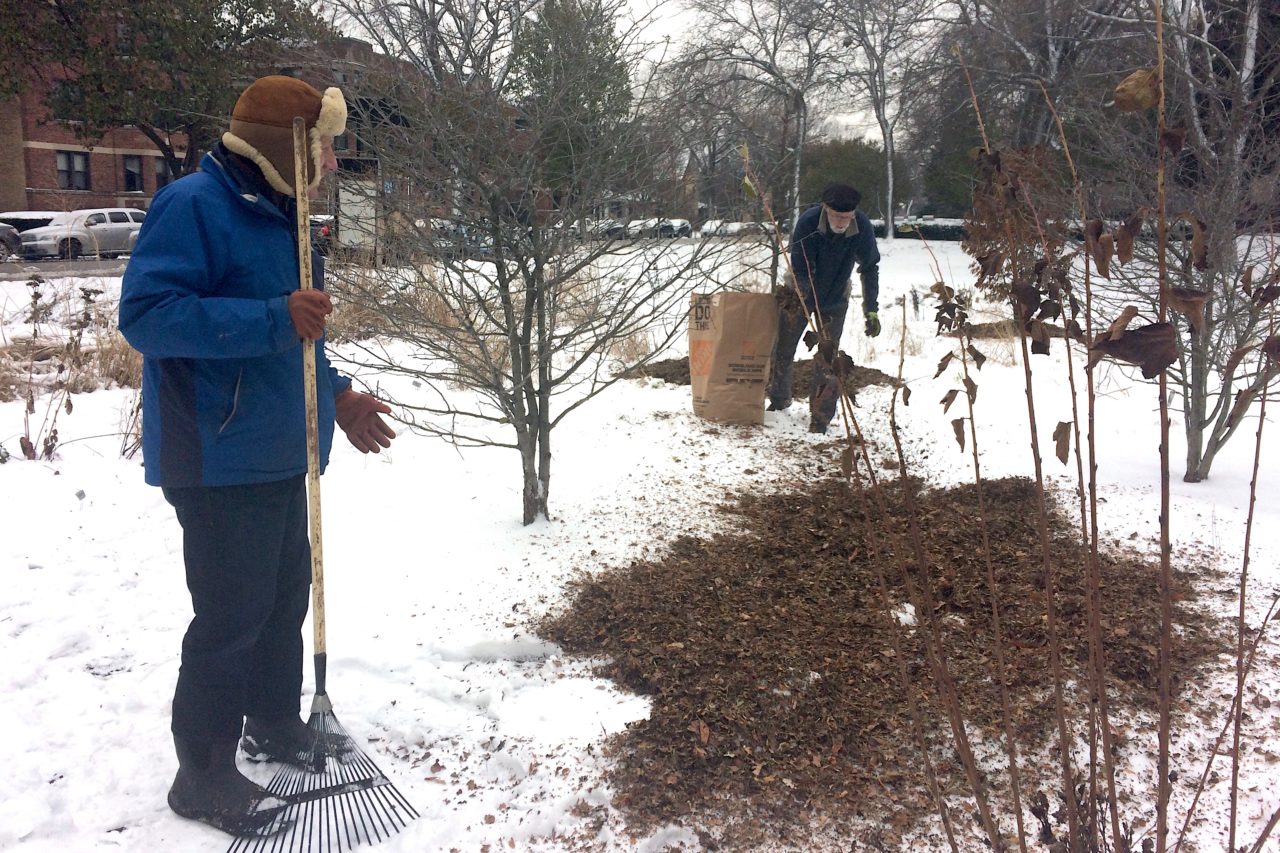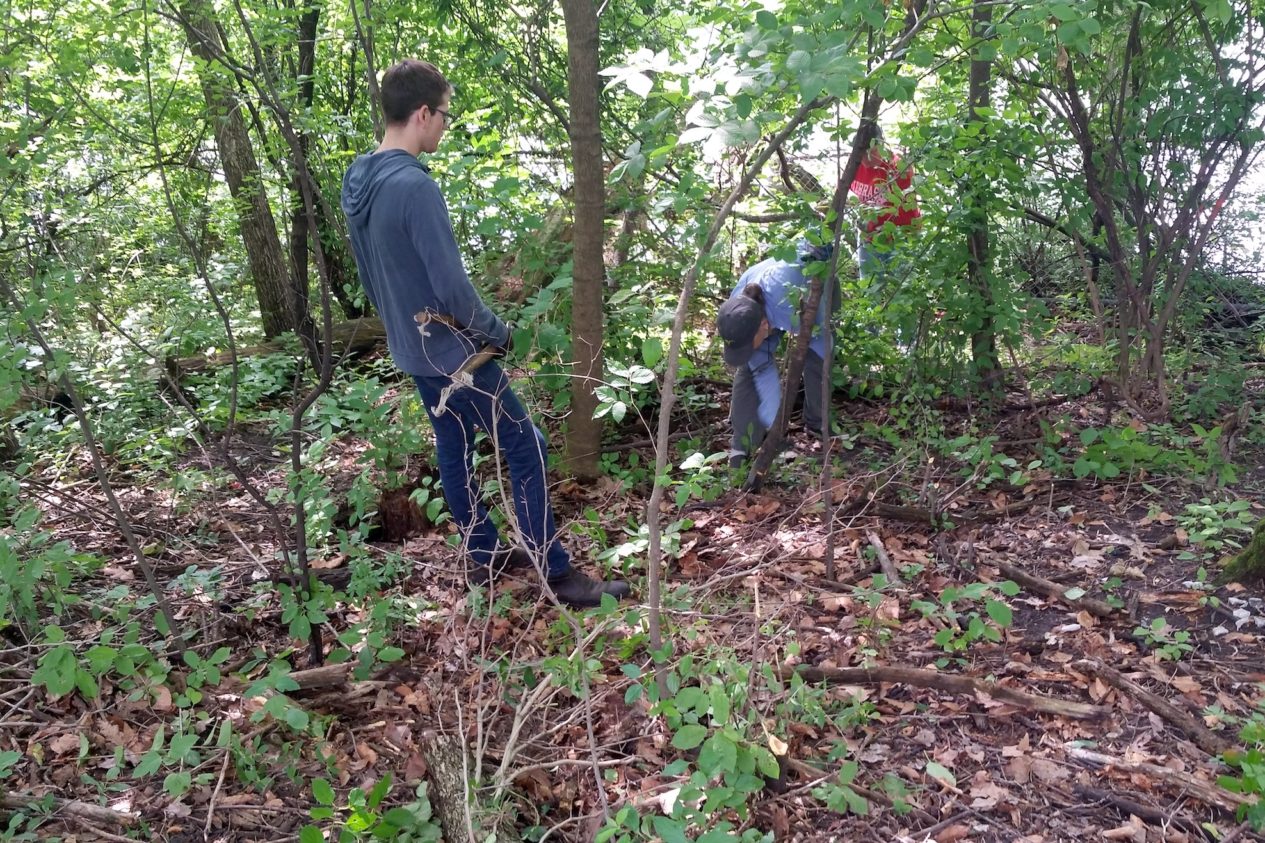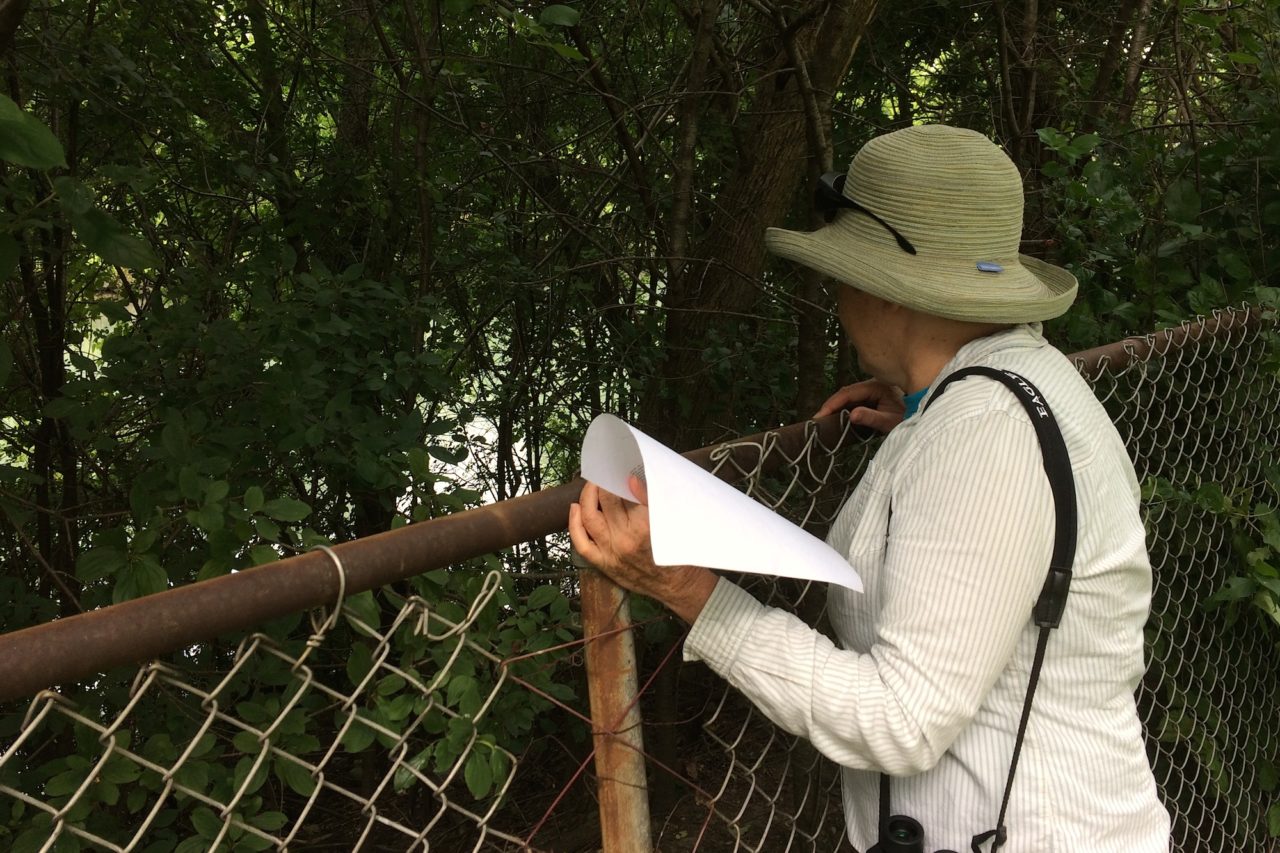Butterfly milkweed is in full bloom now in the Ladd Arboretum. In spite of its name, butterfly milkweed (Asclepias tuberosa) is a native plant and host to butterflies and other pollinators.
Not everyone agrees about what counts as a weed. In fact, the Evanston Environment Board recently recommended changing current ordinances to take off the “weed” list the native common milkweed, which is essential to the monarch butterfly. But there is no argument about some of the nonnative and invasive weeds that also are thriving now. Volunteers are working to stay ahead of them and give the less aggressive native plants room to grow. The morning after a steady rain is the best time to pull weeds, but we sometimes just cut them down to at least keep seed from spreading, especially when the clay soil is hard and dry.
The list of weeds we remove is long. This week, it includes thistles, white sweet clover, chicory, wild mustard, mugwort, common plantain, reed canary grass, bindweed, and black medic. We are always on the look-out for buckthorn seedlings and garlic mustard (a biennial that blooms its second spring). We also pull ragweed, and we cut back resprouts of non-native honeysuckle.
Most of these plants are associated with what’s called “human-related disturbance” (to distinguish it from natural disturbances to ecosystems, like storms). The channel banks meet that definition. This area was once wet prairie, but European settlers started digging ditches to drain it well over a hundred years ago. The channel, which was constructed in 1907-10, followed the course of one of these ditches. Other projects, like the 2015 construction of an asphalt bike path, also have left soils compacted. Weed management will likely always be part of establishing and maintaining native plantings along the channel banks, but we are rewarded every July with the glow of the butterfly milkweed!
